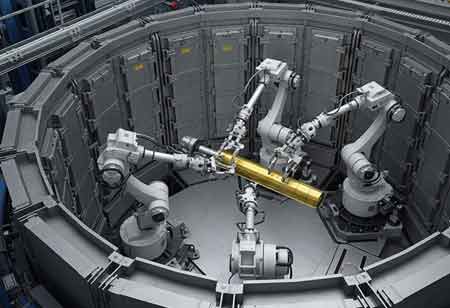CLOSE
Specials
I agree We use cookies on this website to enhance your user experience. By clicking any link on this page you are giving your consent for us to set cookies. More info
Be first to read the latest tech news, Industry Leader's Insights, and CIO interviews of medium and large enterprises exclusively from Energy Tech Review
Thank you for Subscribing
Canada's Path to Net-Zero Emissions
Canada is leading the electrification of industrial heating, leveraging abundant renewable energy sources to decarbonize emissions. Government initiatives support this transition, aiming for 90 percent renewable electricity by 2035 and positioning Canada as a sustainability leader.

By
Energy Tech Review | Monday, August 04, 2025
Stay ahead of the industry with exclusive feature stories on the top companies, expert insights and the latest news delivered straight to your inbox. Subscribe today.
Fremont, CA: Canada is at the forefront of a significant industrial transformation: the electrification of heating processes. This shift, driven by a global imperative to decarbonize industrial emissions, is a testament to Canada's pioneering spirit and commitment to sustainability. It presents both immense opportunities and complex challenges as industries seek to replace fossil fuel-fired heating with cleaner, electricity-based alternatives powered increasingly by these renewable sources.
Canada's transition to renewable energy is underpinned by its large and diverse supply. The dominance of hydropower, particularly in provinces like Quebec, where almost all electricity is sourced from renewables, is a significant advantage. The rapid growth of wind and solar photovoltaic (PV) energy, the fastest-growing sources of electricity generation across the country, plays a crucial role in this transition. This robust foundation of clean electricity, with wind and solar energy at its forefront, makes electrification a highly viable pathway for industrial decarbonization, instilling confidence in Canada's renewable energy potential.
Key Technologies Driving the Shift
Industrial heating electrification is built on several key technologies, including industrial heat pumps, electric boilers and furnaces, solar thermal, thermal energy storage, and heat recovery systems. High-temperature heat pumps capture waste heat and provide long-term financial advantages, while electric boilers and furnaces replace fossil fuel combustion. Notably, solar thermal power, a beacon of renewable energy, generates process heat. Thermal energy storage optimizes energy consumption and stores excess electricity as heat, while the integration of heat recovery with electrification technologies can boost energy efficiency.
Government Initiatives and Incentives
The Canadian government is at the forefront of promoting industrial electrification through various programs and incentives. The Smart Renewables and Electrification Pathways Program (SREPs) is a $4.5-billion program that the government has spearheaded to support grid modernization, energy storage, and renewable energy technologies. The Canada Infrastructure Bank (CIB) has committed $10 billion in Clean Power financing to support clean electricity and clean growth infrastructure, a clear indication of the government's commitment to a sustainable energy future. Investment tax credits, such as the Clean Technology Manufacturing Investment Tax Credit (ITC) and Clean Electricity Investment Tax Credit (ITC), are also introduced to promote electrification and clean technology manufacturing. The government also supports innovative and cost-effective technologies in the "Low-Carbon Industrial Heating Solutions" challenge.
Canada's energy demand is projected to rise by 47 percent by 2050, with renewable sources expected to meet most of this demand. The goal is to generate 90 percent of electricity from renewable sources by 2035, with a long-term goal of 100 percent. This ambitious transition requires substantial investment in clean electricity generation, grid modernization, and the development of industrial-scale electric heating technologies. Canada's commitment to a net-zero future positions it as a leader in this transition.

Copyright © 2025 Energy Tech Review. All rights reserved






